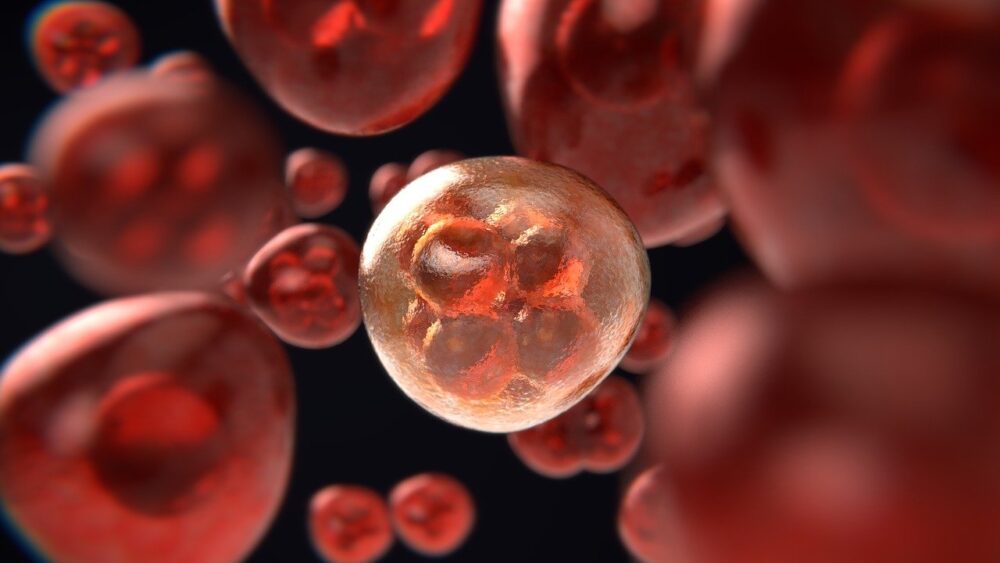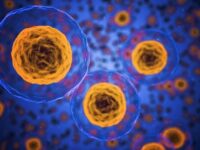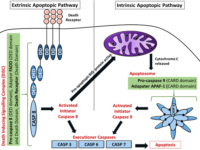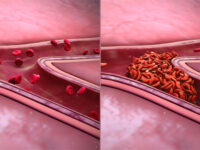Cells, the most basic unit of life, have a remarkable property: resilience. Cells are faced with a multitude of stressful situations that test their ability to survive, thrive, and adapt to new situations. Often, when a cell endures stress, proteins within the cytoplasm begin to unravel. In order to prevent this, ubiquitin molecules are used as a sign and attach to at-risk proteins. They work like flags by signaling those that need to be destroyed by a protein complex called the proteasome, which degrades unusable proteins.
Cells are faced with a multitude of stressful situations that test their ability to survive, thrive, and adapt to new situations.
Proteins react uniquely to different stressors, such as temperature and oxidative stress. Experiments suggest that various groups of proteins react in unique ways to the same stressors, implying that different groups of proteins are more or less susceptible. For instance, heat stress greatly impacts proteins involved in protein synthesis and RNA transport. When faced with a large amount of heat energy, proteins can be distorted, warped, and lose their original structural shape. A protein’s shape directly impacts its function, and any change in the structural integrity of a protein can result in the loss of important cellular functions, ultimately leading to cell death. When its shape becomes beyond the point of recovery, ubiquitin comes into play. After the protein is marked and destroyed, a cell’s ongoing operations can return to normal.
In stressed cells, these denatured proteins bind to RNA molecules, forming large accumulations called stress granules. Within this collection of unusable proteins, many misfolded proteins called defective ribosomal products (DRiPs) are present and marked with ubiquitin molecules. Removal of denatured proteins is facilitated by VCP, a protein that unfolds ubiquitinated proteins. In contrast, DRiPs are removed through VCPs and proteins called chaperone proteins. Both are part of the protein complex proteasome, whose overall function is protein degradation. Through these processes, the stress granule is broken up and disassembled; any inefficiency is removed, allowing a cell to bounce back to regular functioning.
It is not always so simple. There are two main types of stress granules: those that are dynamic and can be deconstructed through proteasomal clearance, and those that are static and unable to be disassembled. In the case of the latter, these persistent stress granules are removed through autophagy, a process where the granule is consumed by a vesicle to be broken down efficiently by allowing the cell to isolate and mitigate malfunctioning parts of the cell.
As of now, it is uncertain if ubiquitin molecules play a larger role in stress relief of a cell or only maintain a signatory function of tracking of aberrant proteins. In addition, it is unclear how a cell senses heat stress and what determines what proteins are ubiquitinated. There is much research to be done in the field, but — as of now — we know ubiquitin plays a crucial role in maintaining regular cell functioning and decreasing the impacts of stress, especially heat-related stress, on a cell.
The millions of cells that you are made of can recover from stress, and so can you!
Cells are constantly adapting and self-regulating in order to maintain their functioning, and ubiquitination is one of the countless cell regulation pathways that exist. Just like cells, humans also face constant and new sources of stress. The biology of a cell can teach us an important lesson: control what you are in charge of. To remove inefficiencies in your life, it is crucial to focus on what you can do and pinpoint what you can change. This same process is happening millions of times per day in your own body as cells take in information, consolidate what needs to be fixed, and employ the necessary mitigation methods. The millions of cells that you are made of can recover from stress, and so can you!
Sources:
Nature (2021). DOI: 10.1038/d41586-021-02197-z
Science (2021). DOI: doi/10.1126/science.abc3593
Image courtesy of Pixabay






